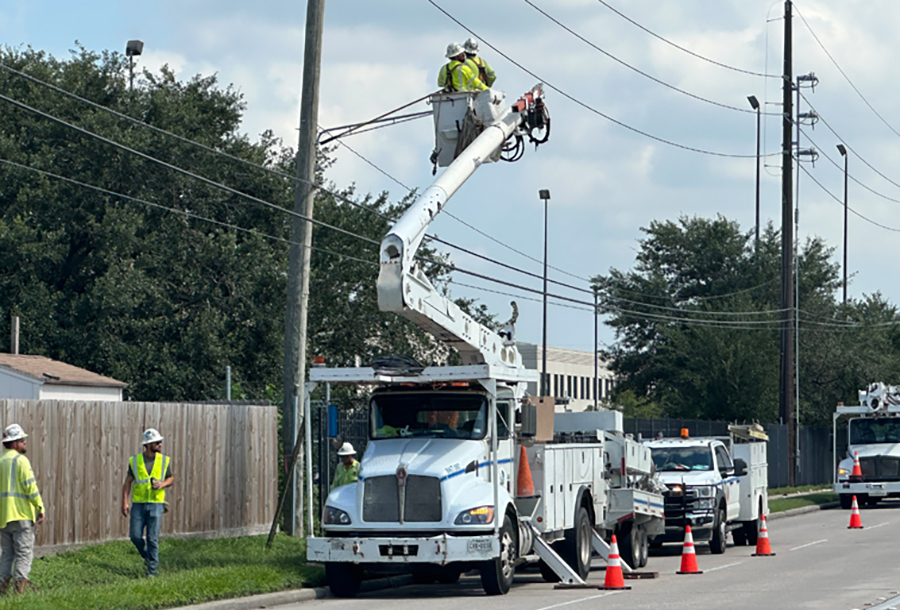CenterPoint Energy
CenterPoint Energy executives outlined a resiliency plan on Thursday in response to the company’s lackluster communication and restoration efforts during Hurricane Beryl.
The company’s three-tier plan, presented to the Public Utility Commission, will use artificial intelligence and other technologies to strengthen restoration speed, improve customer communications with a new outage tracker and strengthen partnerships between coordinators and government officials.
“In times of emergency, our responsibility is to respond quickly, to communicate clearly, to provide accurate information and to restore power as rapidly and as safely as we can,” Jason Wells, the company’s CEO said. “I take personal accountability for areas where we fell short of our customers’ expectations.”
“I also want to apologize for the frustration we caused our customers,” he said. “We will do better.”
Dozens of people died after Hurricane Beryl knocked out the lights for more than 2.2 million customers on July 8, many suffering from hyperthermia, or an increase in body temperature, while power outages took weeks to restore. Texas Governor Greg Abbott directed the state’s public utilities commission to investigate CenterPoint in the wake of the company’s performance during Beryl.
The company is set to release a new cloud-based power outage tracker map by Aug. 1 months after the previous outage tracker failed from high demand, officials said.
“We experienced significant demand on our outage tracker during the derecho restoration process, demand that our own internal servers couldn’t handle,” Wells said.
May’s derecho, which damaged downtown buildings and flung tree limbs across Houston roadways, left more than 1 million customers without power.
Part of the company’s plan is to nearly double the size of its vegetation management crews and target higher-risk vegetation. The company says vegetation was the “number one cause of damage and outages in Hurricane Beryl.”
Wells also told the state’s Public Utility Commission on Thursday that the company will also take a more targeted, technology-based approach to tree trimming, instead of relying on annual cycles.
“Weather stations at a granular level that track ground saturation, rainfall levels, canopy growth, to target trees at highest risk. Unfortunately, that system is available after Hurricane Beryl passed through,” he said.
Wells added the company is also looking for ways for customers to send photos of damage to prioritize downed power lines during outages.
Utility commissioners Thursday put CenterPoint executives in the hot seat over their Beryl response, and criticized the company for making a resiliency plan that should have already been in place ahead of hurricane season.
Commissioner Jimmy Glotfelty said Hurricane Beryl should be a wake-up call to all other utility-providing companies in the state.
“I know this storm hurt a lot of people,” he said. “I think we had folks die as a result, just like Winter Storm Uri. I think it’s horrible that it happened.”
“The storms that are facing their system, the challenges that are facing their systems, whether it be a wildlife that is going to let their customers go out or a big storm or a derecho, I don’t care what it is,” he said. “You all know you system the best, but y’all have to do better. The customers deserve better and we all are giving you a return that expects better.”

